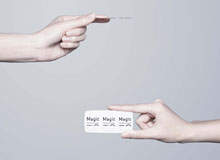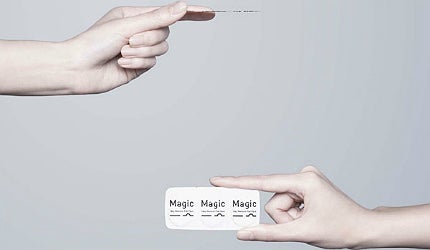

Green is the new black for the packaging world, as consumers become increasingly eco-savvy and search out new ways to reduce waste.
The trend towards sustainability is a win-win for packaging manufacturers, as ‘lightweight’ and ‘ultra-thin’ products result in savings on materials and costs while giving consumers exactly what they want.
It is not surprising then that the ‘TechNavio Global Green Packaging Market 2010-2014’ report projects sustainable packaging will grow by 14% through to 2014.
The report, published in October 2011, predicts eco-packaging will grow steadily thanks to innovative packaging concepts. Here, we take a look at 2012’s most exciting new developments.
Lightweight glass packaging – recyclable and cost-effective
TechNavio’s report forecast that there would be an increase in manufacturers using recyclable materials, such as glass, and it was spot on as in March 2012 glass packaging company Beatson Clark launched a new lightweight beer bottle.
The amber tapered glass may not have an instant ‘wow’ factor, but the new design means it has shed almost half its original weight and comes in on the scales at just 285g.
Beatson Clark said at the time of the launch that there are endless reasons to use lightweight glass packaging: “The benefits of lightweighting include reduced production costs and the ability to offer clients a more cost-effective product without compromising on quality.”
One important advantage of lightweight packaging Beatson Clark failed to mention is the simplest one of all: convenience. Convenience was one of the main drivers for wine supplier, Bronco Wine Co, when it decided to make the switch from glass to lightweight plastic polyethylene terephthalate (PET) bottles with help from rigid plastic packaging manufacturer, Amcor Rigid Plastics.
The move from glass to PET for single serve 187ml wine bottles was announced in June 2012 and means Bronco can offer consumers a ‘convenient, lightweight container that is 100% recyclable,’ said Bronco Wine Co president, Fred Franzia.
PET bottles are also one-sixth the weight of glass and are unbreakable, and Bronco hopes to attract a whole new range of customers at festivals, concerts and even on aeroplanes.
Smaller components mean large material savings
Lightweight bottles are all well and good but count for very little if other packaging components do not play their part. In June 2012 Closure Systems International (CSI) launched a lightweight closure lid for soft drink bottles called the Xtra-Lok mini ‘S’ 28mm.
The bottle top, which does not look any different to the naked eye, delivers total material savings of more than ten percent compared to the original design.
In fact, the material savings on a typical truckload order is expected to be more than 4,000lbs. No sacrifices were made in terms of performance either, as the lightweight lid has the added advantage of being secure, yet easy to open.
Material savings is one way to make packaging lighter and more sustainable but an alternative is to create an innovative design or concept.
Nampak Plastics achieved both and was awarded with the ‘best dairy packaging innovation’ at the Dairy Innovation Awards 2012 for its Infini milk bottle. Nampak’s main objective when designing the bottle was to create a reduced weight product that was still fit for purpose.
At first glance the bottle looks like any other plastic milk carton, but subtle differences to its shape means it has weight savings of up to 25% compared with a standard bottle. The designers did not forget about the usability factor either, as the handle is cleverly positioned at the corner edge of the bottle so it can be grabbed easily when stored inside a fridge door, for example.
On a diet – food packaging reduces its weight
Lightweight was a big story at the 2012 DuPont Packaging Awards, with a number of winning food packaging innovations being described as ‘reduced weight’.
The new Goldfish sandwich bread packaging, for example, won gold for innovation and waste reduction, as it did not have a tray component meaning it used almost two-thirds less material.
As a result, an extra 25% of packages can be shipped in the same amount of space compared to the original wrapping, resulting in lower transportation costs and a smaller carbon footprint.
The award-winning Goldfish packaging, which is a flow wrap package made from a film lamination, offers a breath of fresh air from the traditional bread wrappings found in the supermarket bakery aisle. The packet is see-through and the individual bread slices sit side by side so you can see exactly what you are getting.
The Weight Watchers Smart Ones environmentally-friendly tray for frozen entrees, which scooped silver, weighs 15% less than previous designs and uses 40% less plastic. The tray is made from a hybrid material of polypropylene with calcium carbonate, a common natural material that reduces emissions by more than 45% during production compared to crystalline polyethylene terephthalate (CPET).
A new ready-meal tray called ‘Split-it’ claims to go one step further, by offering a green ‘hat trick’ of benefits for eco-conscious consumers.
The tray, which was shown at this year’s Packaging Innovations 2012 conference in Birmingham, UK, provides “a near half weight reduction compared to [an] equivalent plastic tray, adding significant further arguments to its green credentials when calculating distribution costs,” said Split-it’s sales and marketing director, Paul Tye.
Split-it’s clever design also boasts reduced embedded carbon and has the potential to be recycled. The board skillet dish, which is lined with a thin film, can be pulled apart in one swift motion so the board can be recycled with cardboard after use.
Boosting sustainability with ultra-thin packaging
Away from the food and drinks market, Japanese contact lens manufacturer Menicon has created the world’s thinnest contact lens pack.
Related project
Nestlé Lightweight Bottling Plant, Buxton, UK
Nestlé Waters UK unveiled a new water bottling and warehouse facility at Waterswallows in Buxton, UK, in November 2011.
The ultra-thin novel flat pack, which resembles the blister packs used to hold tablets, measures just 12.5% of the thickness and 40% of the volume of a conventional pack. It has already won three awards for its slick and slimline design, despite not being on the consumer market yet.
It’s easy to understand why, as traditional contact lens packs have lenses floating loosely in a plastic container, while the blister pack keeps contact lenses secure between two specially designed foil sheets.
As a result consumers will be able to carry spare pairs of contact lenses safely in a purse or wallet.
The old saying ‘all good things come in small packages’ couldn’t be more apt for today’s packaging industry. As consumers and manufacturers continue to benefit financially and environmentally from lightweight and ultra-thin innovations, there is no reason why the trend won’t continue into 2013 and beyond.



